30 Aug 2021
Forty Hall Summer Dig - Day 8

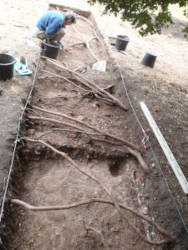
Another decent but unspectacular day's digging in Forty Hall today on day 8 of our two week dig in search of the inner gatehouse of Elsyng Palace.
Work in the east end of trench two succeeded in finding the missing edge of the thick rubble deposit which we began looking for yesterday in the baulk between the main trench and its extension.
This does then look like a linear rubble-filled feature, although it seems far too shallow to be anything significant like a robbed out wall line or backfilled moat.
We began removing the rubble fill today, and will continue on Wednesday, but as before the process is severely hindered by the dense network of tree roots at this end of the trench.
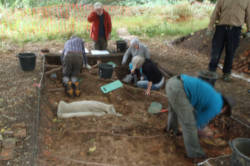
Meanwhile at the west end of trench two work continued removing the coarse sloping rubble deposit we've been working on for several days now.
We've removed more than 60 centimetres of rubble in places here and still haven't really found a definitive base to the context, and although it's looking increasingly unlikely that we'll find any in-situ structure, it is further strong evidence of a substantial and fairly high status building very close by.
Progress in this context has at times been painstakingly slow, as for the most part we have to essentially pick apart the rubble brick-by-brick, but the deposit has continued to reward our patience with plenty of decent finds.
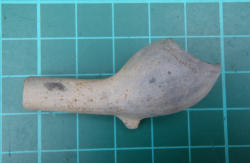
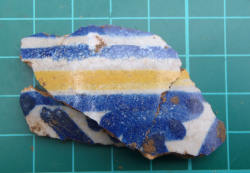
Some of the nicer finds included another very early clay tobacco pipe, tentatively dated to the early 1620s, and a fragment of colourfully decorated Delftware - tin-glazed earthenware in a style imported from the Netherlands but typically made in London.
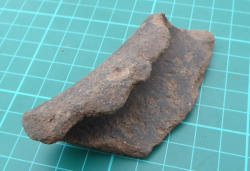
Perhaps one of the most interesting finds of the day, however, came from the other end of the trench - a fairly sizeable chunk of a substantial cooking pot, made from a crude coarse sandy fabric distinctive of medieval pottery, we think at the moment probably dating to the 14th century.
This is a period of which we know vanishingly little about Elsyng - about a century before the first really substantial high-status buildings were constructed by the Earl of Worcester - but we do know, in part due to finds like this, that the site was inhabited long before the Earl, possibly as far back as the early 12th century.
Tomorrow we'll be taking a day of to catch up on paperwork and laundry, but we'll be back on site on Wednesday morning and working every day until the end of the dig this Sunday.
There's still time for a last-minute gatehouse!